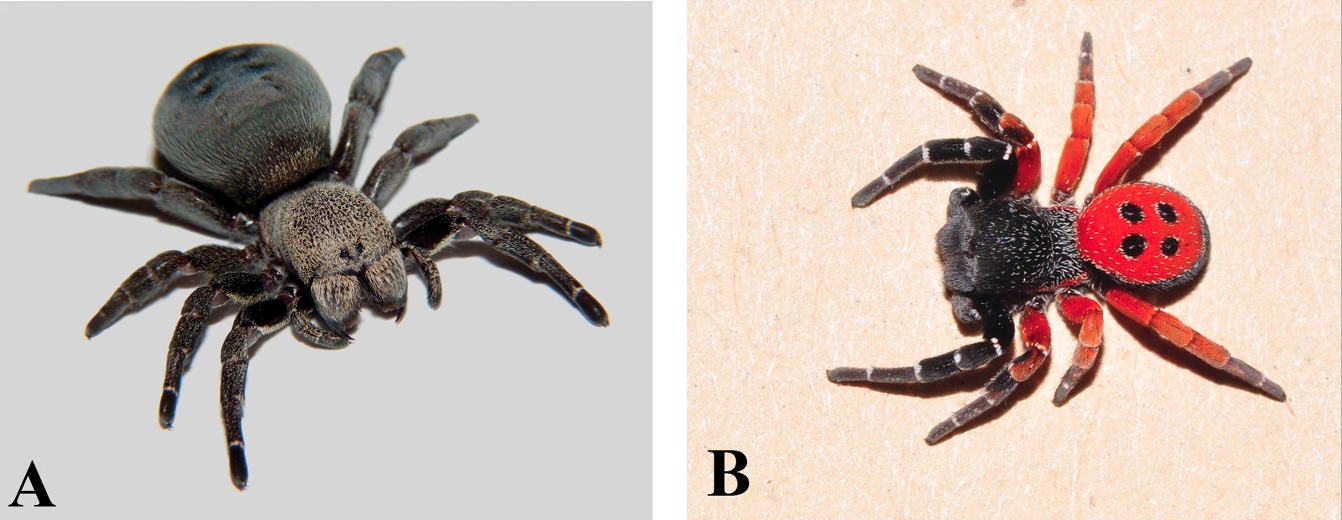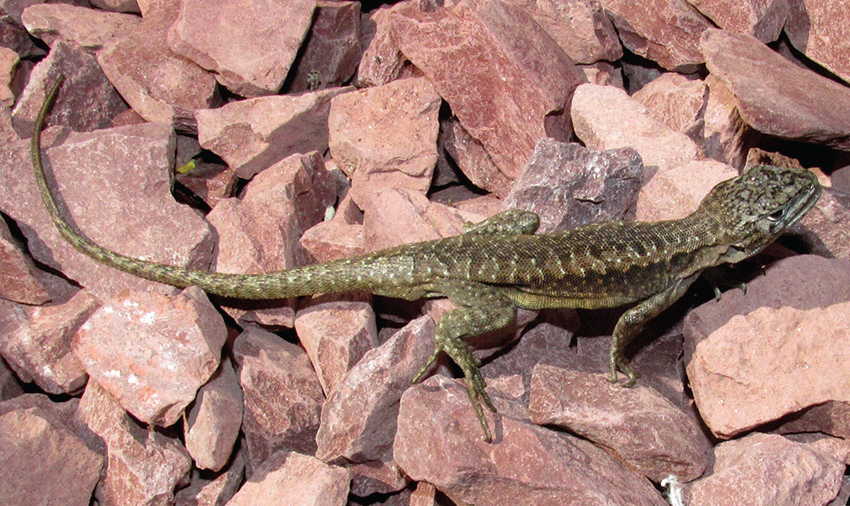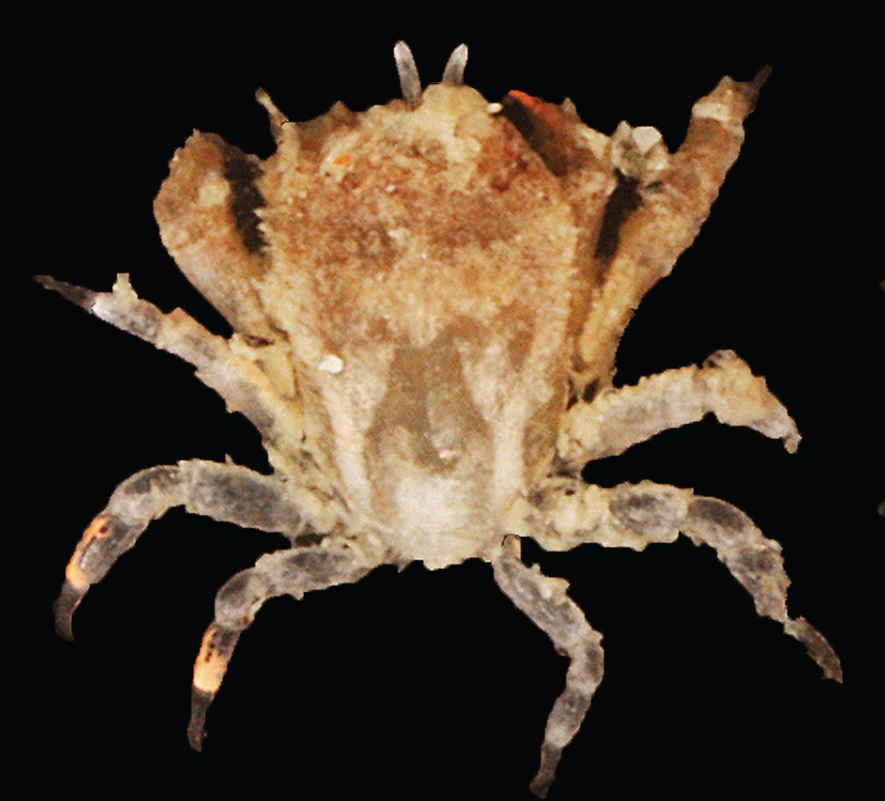Kermit the Frog Look-Alike Among 5 New Species Uncovered

This story was updated May 4 at 1:15 p.m. EDT.
The planet is crawling with critters, but scientists are meeting some of them only just now. During the past month, researchers have published studies on a handful of previously unknown animals. We'll take a look at these newly introduced types of lizards, frogs, spiders, scorpions and crabs that live in the nooks and crannies of the wild. [In Photos: The Wacky Animals of Madagascar]
1. Ladybird spider
In addition to the four black dots on its red abdomen, the male Eresus hermani has red on six of its eight legs, making it look as if it's ready for a fabulous costume party. (The researchers are big fans; they call velvet spiders in the family Eresidae "among the most attractive spiders in Europe," in the study, published April 6 in the journal ZooKeys.) Researchers have found a new species of ladybird spider crawling around Hungary. The male ladybird spiders, or those spiders in the genus Eresus, are known for the distinctive red-and-black ladybuglike markings on their abdomens, and the new species named Eresus hermani is no exception.

After studying 20 males, 25 females and four juveniles of E. hermani, the researchers found the males tend to be smaller, and the females tend to be larger, than other Central European spiders in the genus. On average, males are 0.13 inches (3.4 millim) long, and females are 0.3 inches (8.2 mm) long, the researchers found. The spiders mate in the early spring.
E. hermani females aren't as colorful as the males. They have light gray, brown and black coloring, "giving [the female's head] a light, grizzled appearance," the researchers said in the study.
The spiders are found in downy oak scrubland, open rocky grasslands and degraded scrubland in Hungary, the researchers said.
Sign up for the Live Science daily newsletter now
Get the world’s most fascinating discoveries delivered straight to your inbox.
2. Volcanic home

Two previously unknown species of lizard came out of hiding among the volcanic rock of southern Chile.
Liolaemus scorialis, first collected in August 2014 and measuring about 6.5 inches (164 mm) long, is named for its surroundings: the igneous rocks from the Antuco volcano, called "scoria," from the Greek skoria, the researchers said in the study, published online April 27 in the journal ZooKeys. L. scorialis has ringed markings on its tail and a dark-brown band running from its shoulder to its groin, the researchers noted.
The second newfound species, Liolaemus zabalai, is named after Patricio Zabala, a collection manager at Pontifical Catholic University of Chile and a herpetological research advocate. The lizard measures about 7.2 inches (18.3 centimeters) long and lives among the scattered rocks and sparse plants that cover the sandy soil near the volcano. It's omnivorous but mainly eats plants, the researchers added.
3. Coral-dwelling crab
A researcher snagged a new species of gall crab, named Lithoscaptus semperi, living in the tropical waters of Indonesia and Malaysia.

Gall crabs are tiny — they measure less than 0.4 inches (1 cm), including their claws — and they live in stony corals. As larvae, gall crabs settle on the coral, which then grows around them to create a dwelling called a "gall," the researcher said.
Female gall crabs are twice the size of males. Because they also carry eggs, the females are too big to leave their galls, and become "imprisoned," the researcher said. Males, in contrast, can likely leave their galls and move around freely.
"When I started working on gall crabs, I had a hard time finding them because of their small size," the study's author, Sancia van der Meij, a research fellow of marine zoology at the Naturalis Biodiversity Center in the Netherlands, said in a statement. "But once I knew how to recognize their dwellings, I realized they are actually very common on coral reefs."
So far, L. semperi is known to dwell only on one species of coral, called Trachyphyllia geoffroyi, according to the study, published April 27 in the journal ZooKeys.
4. Kermit look-alike
A new frog species from Costa Rica is the spitting image of the beloved Kermit the Frog. The inch-long (2.5 cm) amphibian, named Hyalinobatrachium dianae, joins Costa Rica's 13 other types of glass frogs, creatures named for their translucent bodies, Live Science reported earlier this month.
H. dianae has distinctive light-green skin, and white, bulging eyes, but researchers zeroed in on its mating calls. A recording of a male in the wild sounded like "a single tonal long, metallic, whistlelike note," lasting about 0.5 seconds, the researchers wrote in the study. This unique call, along with a DNA analysis, helped researchers define it as a new species, according to the study, published Feb. 19 in the journal Zootaxa.
Researchers found six of the frogs in the Caribbean foothills of Costa Rica, at elevations between 1,300 and 2,950 feet (400 and 900 m) above sea level, Live Science reported.
"Prior to the media making the link between Hyalinobatrachium dianae and Kermit the Frog, I had no thought about the resemblance, but I can see where they came up with this idea that has created such a sensation with this newly described species," the study's lead researcher, Brian Kubicki, of the Costa Rican Amphibian Research Center, told Live Science.
5. Scorpion-filled cave
An analysis of a single male scorpion found in a deep cave in Vietnam has helped researchers identify a new species.
Scientists found the yellowish scorpion, which they named Alloscorpiops troglodytes, about 197 feet (60 m) inside a cave in the Song Thanh Nature Reserve in the Nam Giang District, the home of one of the largest tropical forests in Vietnam, according to the study, published April 27 in the journal ZooKeys.
The 0.8-inch-long (20.9 mm) scorpion looks different from the other four species in its genus. Compared with its relatives, its body is smaller, more slender and has elongated pincers called pedipalps, the researchers said.
Editor's Note: This story was updated to correctly categorize frogs as amphibians.
Follow Laura Geggel on Twitter @LauraGeggel. Follow Live Science @livescience, Facebook & Google+. Original article on Live Science.

Laura is the archaeology and Life's Little Mysteries editor at Live Science. She also reports on general science, including paleontology. Her work has appeared in The New York Times, Scholastic, Popular Science and Spectrum, a site on autism research. She has won multiple awards from the Society of Professional Journalists and the Washington Newspaper Publishers Association for her reporting at a weekly newspaper near Seattle. Laura holds a bachelor's degree in English literature and psychology from Washington University in St. Louis and a master's degree in science writing from NYU.










